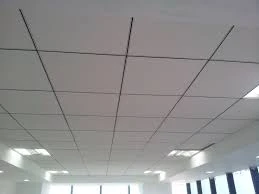10 月 . 11, 2024 20:41 Back to list
Ceiling Access Hatch Dimensions for Various Applications and Building Types
Understanding Ceiling Access Hatch Sizes A Comprehensive Guide
In modern architecture and construction, ceiling access hatches play a vital role in providing convenient access to the spaces above ceilings, such as attics, maintenance areas, and mechanical spaces. These hatches are essential for utility and maintenance personnel, allowing them to perform inspections and repairs without needing to disrupt the entire structure. However, one critical aspect that often demands attention is the sizing of these access hatches. In this article, we will explore the various sizes of ceiling access hatches, their importance, and the factors to consider when selecting the appropriate size for your project.
Importance of Proper Sizing
Choosing the right size for a ceiling access hatch is crucial for several reasons
1. Accessibility The primary purpose of an access hatch is to provide easy entry to overhead spaces. A hatch that is too small may not allow adequate access for individuals or equipment, leading to safety risks or operational inefficiencies.
2. Building Codes Different jurisdictions have specific building codes that dictate the minimum size of access openings. It’s essential to adhere to these regulations to ensure compliance and avoid potential legal issues.
3. Functionality The size of the hatch will often determine the scope of work that can be performed in the space above. Larger hatches may allow for more extensive maintenance and repairs, particularly in industrial or commercial buildings where large equipment or machinery is present.
Common Sizes of Ceiling Access Hatches
Ceiling access hatches come in various standard sizes, which can cater to different needs. Understanding these common sizes can help you make an informed decision
1. Square Hatches The most common square sizes are typically 24 x 24, 30 x 30, and 36 x 36. These dimensions are suitable for residential applications where access to ductwork, plumbing, and electrical systems is necessary.
2. Rectangular Hatches For spaces requiring larger access, such as commercial buildings, rectangular hatches may be more appropriate. Standard sizes include 24 x 36, 30 x 48, and 48 x 96. These larger sizes can accommodate the entry of larger equipment, which might be necessary for maintenance or installation purposes.
ceiling access hatch sizes

3. Custom Sizes In many cases, you might find that standard sizes do not meet your specific needs. Most manufacturers offer custom sizes, allowing you to specify the dimensions that best fit your project requirements.
Factors to Consider When Choosing Hatch Sizes
When selecting the size of a ceiling access hatch, several factors should be taken into account
1. Purpose of Access Identify what you need access for. If it’s just for periodic inspections, a smaller hatch might suffice. For tasks that involve carrying large tools or equipment, a larger size is necessary.
2. Location and Space Constraints Evaluate the area where the hatch will be installed. Consider overhead structures, ductwork, and any other obstructions. Space limitations may affect the size you can install.
3. Frequency of Use If the access hatch will be used frequently, opt for a size that not only allows easy access but also accommodates larger items without struggle.
4. Future Needs Consider the potential for future maintenance or renovations. Choosing a hatch size that accommodates possible future needs can save both time and money in the long run.
5. Aesthetic Considerations Hatches should blend well with the ceiling design. A hatch that is too large or oddly shaped can disrupt the aesthetic flow of a room.
Conclusion
In summary, selecting the right size for ceiling access hatches is a critical aspect of building design that impacts functionality, safety, and compliance with regulations. With standard sizes ranging from square to rectangular, as well as the availability of custom options, it is essential to consider the specific needs of your project. By taking into account factors such as intended use, location, frequency of access, and future requirements, you can ensure that your ceiling access hatch will serve its purpose effectively and efficiently. Planning ahead and choosing wisely will contribute significantly to the overall success of any construction or renovation project.
-
Revolutionizing Interior Design with Ceilings t grid Suspended SystemNewsOct.29,2024
-
Revolutionizing Ceiling Design with ceiling access panel with Gypsum Tile WaterproofNewsOct.29,2024
-
Revolutionizing Interior Design with PVC Gypsum Ceiling: A Comprehensive GuideNewsOct.29,2024
-
Elevating Interior Design with High quality Mineral Fiber Ceiling TilesNewsOct.29,2024
-
Revolutionizing Interior Design with PVC Gypsum Ceiling: A Comprehensive GuideNewsOct.29,2024
-
Elevating Interior Design with High-Quality Mineral Fiber Ceiling Tiles: A Comprehensive GuideNewsOct.29,2024







